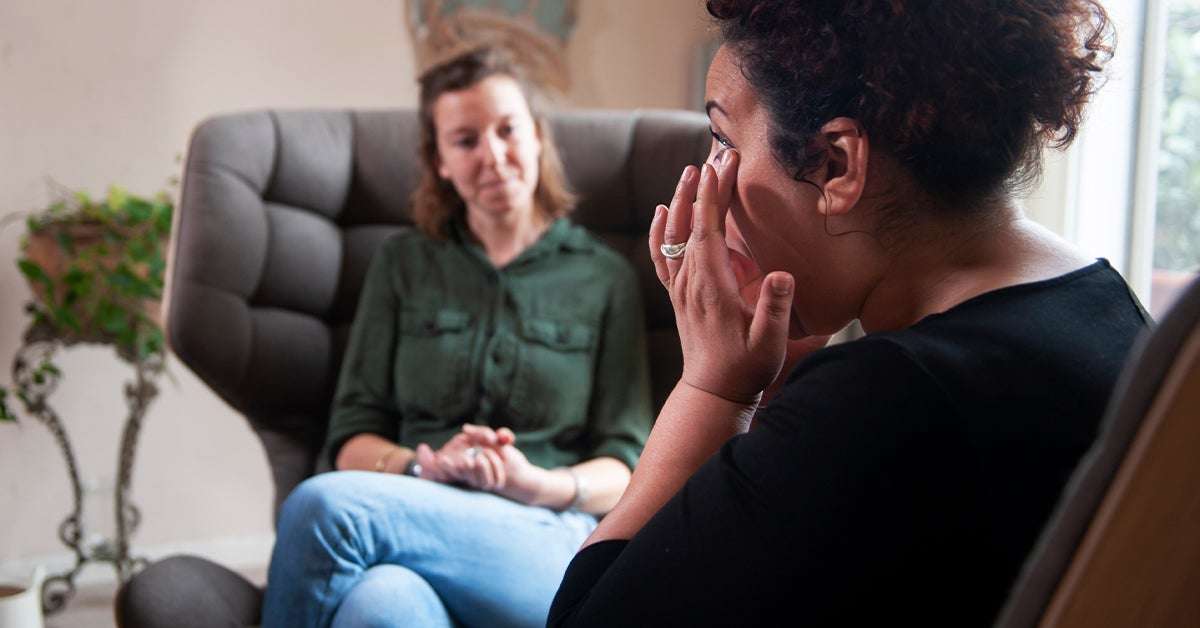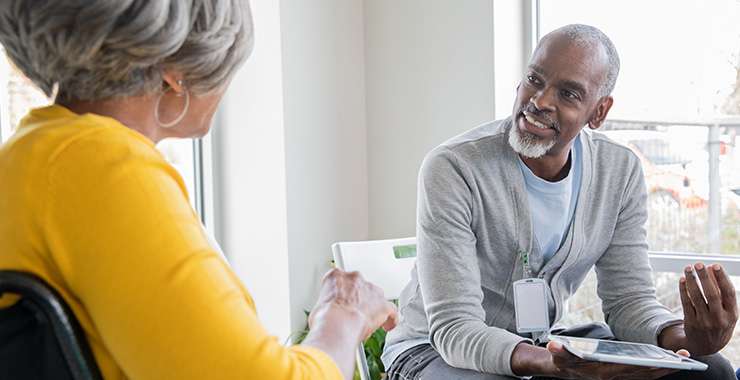Corrective learning is a process that occurs when existing conceptions and beliefs are replaced by more adaptive ones. For individuals with anxiety, panic, and phobias, exposure therapy is a common form of treatment that aims to produce corrective learning.
During exposure therapy, individuals are exposed to things they fear or that threaten them. Because these situations or things are usually avoided as a result of anxiety, the theory behind exposure therapy posits that being confronted with the feared item or event in a controlled environment will allow the individual to realize that his or her fears surrounding that item or event will not be realized. It is also believed that the level of fear or anxiety that is experienced during the exposure directly predicts the level of reduction in anxiety at treatment outcome. In other words, the more fearful or anxious someone is during a session, the more he or she will be able to overcome that fear in the long run.
This theory has been tested at length. However, Alicia E. Meuret of the Department of Psychology at Southern Methodist University in Texas wanted to examine this further. In a recent study, Meuret assessed the physiological and emotional responses of 34 participants with agoraphobia and panic as they underwent either a cognitive behavioral or breathing-based exposure therapy. She found that the participants all experienced increases in panic and anxiety during the sessions, as evidenced by physiological markers and emotional responses, but that these increases did not lead to better outcomes. In fact, the more panicked and fearful the individuals were, the worse their treatment outcomes. Additionally, in contrast to existing research, Meuret found that symptom reduction during treatment did not predict treatment outcome. In other words, even if the individuals experienced spikes in treatment severity during exposure and then were able to reduce their anxiety as the session continued, this drop did not lead to better overall outcome.
It has been suggested that allowing a client to experience symptom reduction during exposure provides a sense of self-control and mastery for the client and accomplishment for the therapist. And although this may indeed be true, the reduction of symptoms after exposure does not seem necessary for treatment success. In fact, the treatment outcomes were similar for those who left sessions with symptoms that were elevated as well as with symptoms that were diminished. Meuret believes that these results contradict the theory that fear reactivity is an indicator of treatment outcome, although her study was limited by sample size and the fact most of the participants were well-educated white females. “More research is needed to examine the underlying mechanism of corrective learning during exposure across therapy types,” she said.
Reference:
- Meuret, Alicia E., Anke Seidel, Benjamin Rosenfield, Stefan G. Hofmann, and David Rosenfield. Does fear reactivity during exposure predict panic symptom reduction? Journal of Consulting and Clinical Psychology 80.5 (2012): 773-85. Print.
© Copyright 2012 GoodTherapy.org. All rights reserved.
The preceding article was solely written by the author named above. Any views and opinions expressed are not necessarily shared by GoodTherapy.org. Questions or concerns about the preceding article can be directed to the author or posted as a comment below.
Once you feel more comfortable, the therapist may progress to real-life exposure where they place a real spider in the room with you and eventually place it in your hand. The treatment can last a few hours or across multiple hour-long sessions.
Applied muscle tension. This treatment is similar to in vivo exposure but incorporates muscle tension exercises. During the treatment, you tense your body’s muscles thus increasing your blood pressure, which makes it less likely that you’ll faint. This can be especially helpful for people with a fear of things like blood or needles.
Virtual reality exposure. This type of exposure therapy uses a computer program to stimulate the phobic situation (i.e. being on a plane, leaning over a large balcony ledge, seeing a spider, etc.) and integrates body tracking devices that allow you to interact with the virtual environment.
Systematic desensitization. When you engage in this type of therapy, you are exposed to fear-evoking images and encouraged to imagine the things you are afraid of while pairing the exposure with relaxation to help manage the fear response. This treatment takes longer than other methods like in vivo exposure but tends to be more effective at reducing anxiety and avoidance tendencies.
Learning more about exposure therapy can help you make an informed decision about treatment and prepare you for what to expect.
Exposure therapy is a kind of behavioral therapy that is typically used to help people living with phobias and anxiety disorders. It involves a person facing what they fear, either imagined or in real life, but under the guidance of a trained therapist in a safe environment. It can be used with people of all ages, and has been found to be effective.
In exposure therapy, a person is exposed to a situation, event, or object that triggers anxiety, fear, or panic for them. Over a period of time, controlled exposure to a trigger by a trusted person in a safe space can lessen the anxiety or panic.
There are different kinds of exposure therapies. They can include:
- In vivo exposure. This therapy involves directly facing the feared situation or activity in real life.
- Imaginal exposure. It involves vividly imagining the trigger situation in detail.
- Virtual reality exposure. This therapy can be used when in vivo exposure isn’t realistic, like if someone has a fear of flying.
- Interoceptive exposure. This therapy involves purposefully triggering a physical sensation that is feared, but harmless.
A 2015 research review showed that within those kinds of exposure therapies there are different techniques like:
- Prolonged exposure (PE). This includes a combination of in vivo and imaginal exposure. For example, someone might repeatedly revisit a traumatic event by visualizing it, and talking about it with a therapist simultaneously, and then discussing it to gain a new perspective about the event.
- Exposure and response prevention (EX/RP, or ERP). Typically used for people with obsessive compulsive disorder (OCD), this involves doing exposure homework, such as touching something considered “dirty,” and then refraining from performing the compulsive behavior that is triggered from the exposure.
Generalized anxiety
Treatment for generalized anxiety disorder (GAD) can include imaginal exposure and in vivo, but in vivo exposure is not as common. The 2015 research review above showed that cognitive behavioral therapy (CBT) and imaginal exposure improved general functioning in people with GAD compared to relaxation and nondirective therapy.
There is not a lot of research with exposure therapy and GAD, and more is needed to further explore its effectiveness.
Social anxiety
In vivo exposure is typically used for people with social anxiety. This can include things like going to a social situation and not avoiding certain activities. The same 2015 research review above showed that exposure with or without cognitive therapy may be effective in reducing symptoms of social anxiety.
Driving anxiety
Virtual reality exposure therapy has been used to help people with a driving phobia. A small 2018 study found that it was effective in reducing driving anxiety, but more research still needs to be done with this specific phobia. Other therapies may need to be used alongside exposure therapy.
Public speaking
Virtual reality exposure therapy has been found to be effective and therapeutic to treat anxiety about public speaking for both adults and teens. One small 2020 study found that there was a significant decrease in self-rated anxiety about public speaking after a 3-hour session. These results were maintained 3 months later.
Separation anxiety
Separation anxiety disorder is one of the most common anxiety disorders in children. Exposure therapy is considered the top treatment for it. This involves exposing the child to feared situations and, at the same time, encouraging adaptive behavior and thinking. Over time, the anxiety lessens.
Obsessive compulsive disorder (OCD)
Exposure and response prevention (ERP) uses imaginal and in vivo exposure and is often used to help treat OCD. In vivo exposures are done in the therapy session as well as assigned for homework, and the response prevention (not engaging in compulsive behaviors) is part of that. An individual lets the anxiety decrease on its own instead of performing the behaviors that would get rid of the anxiety. When in vivo exposure is too hard or impractical, imaginal exposure is used.
While a 2015 research review showed that ERP was effective, ERP is comparable to cognitive restructuring alone and ERP with cognitive restructuring. Exposure therapy for OCD is most effective when guided by a therapist and not done independently. It’s also more effective when using both in vivo and imaginal exposure, as opposed to solely in vivo.
Panic disorder
Interoceptive exposure therapy is often used to treat panic disorder. According to a 2018 research review of 72 studies, interoceptive exposure and face-to-face settings, meaning working with a trained professional, were associated with better rates of effectiveness, and people were more accepting of the treatment.



